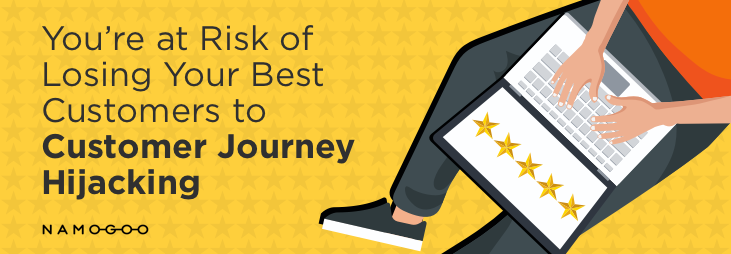Shopping carts are not unique to eCommerce.
Shopping cart abandonment is.
Let that realization sink in. In all the pre-eCommerce years when people relied on physical shopping carts, there was never a need for the term “shopping cart abandonment,” because it was never a frequent enough phenomenon to deserve its own name. After all, when was the last time you were in line at the supermarket when the customer in front of you suddenly lost interest in their cart full of groceries and walked out of the door empty-handed?
Yet, over the past decade, roughly 70% of online shopping sessions have ended with the online equivalent of a sudden walkout – and that cart abandonment rate seems to be on the rise.
Why do eCommerce customers abandon their shopping carts so frequently? Does your online store suffer from the common mistakes that can drive up cart abandonment rates? And how can you push those rates down to boost your sales?
To help you take on the challenge that shopping cart abandonment poses to your sales, here is a look at five of the key reasons many shoppers opt to leave their cart without making a purchase:
Reason #1: They’re not ready to buy yet
Perhaps the most important thing to understand about shopping cart abandonment is that it’s not necessarily a sign that something is terribly wrong. While lowering its rates is an important goal, these rates are generally high across the world of eCommerce.
That’s largely because of the way people shop online. Consumers can quickly and easily fill their shopping carts, and they can just as easily leave those carts without making a purchase. And because it’s so easy to come and go, shoppers use their carts differently online than they would in a physical store. In fact, customer surveys have found that the most common reason for shopping cart abandonment is that users were “just looking.”
In some cases, a user may fill their cart as part of their research. It’s especially common for them to want to see for themselves whether there are shipping fees or other costs they may not have expected. In other cases, they may simply use the shopping cart as a sort of wish list, assembling a set of products that they want to look into and consider buying.
In short, putting an item into an online shopping cart isn’t always an indication that a shopper really wants to buy it. And just because a shopper has abandoned their cart doesn’t necessarily mean something is wrong. It doesn’t even necessarily mean the user won’t make a purchase. It simply means that this session has ended without a purchase.
But that doesn’t mean you have to let the shopper slip away into the wind. You can still encourage customers to come back and make a purchase. For example, companies have achieved impressive results by offering to email a user’s shopping cart to them. Not only does this make it easy for the user to continue their shopping session later, but it adds a promising touchpoint to the customer journey.
Reason #2: Your prices and shipping fees are too high
A 2018 study found that when shoppers abandon their carts during the checkout phase, the most common reason is high prices and shipping fees. This should come as no surprise, given the ways many shoppers use their online shopping carts for research purposes. For example, if a user is considering one of your items when they find that a competitor sells a similar product at a lower price, it’s easy to see why they are likely to opt not to buy from you.
And for users who add items to their carts in order to see whether there are additional fees, discovering high shipping costs can be a deal-breaker.
The good news? Of all the reasons for shopping cart abandonment, high prices may be the simplest to fix. The bad news, of course, is that fixing this problem can cut into your profit margins. One strategy that some retailers choose is to offer free shipping.
Reason #3: They’re frustrated by your website’s user experience
If high costs are the simplest problem to fix, the user experience within your online store may be the most complicated. Given that every website is different, there is no one-size-fits-all solution here. But the bottom line is that if you want customers to buy from you, then it’s critical to make their shopping and checkout processes quick, clear, easy, predictable, and even enjoyable.
Here are just some of the common UX pitfalls that hold some online stores back:
- Users cannot make a purchase without creating an account.
- Checking out takes too long, involves too many steps, or both.
- The website loads slowly, crashes, or both.
- The website is not mobile-friendly. (It may take too long to load on a mobile device, it may be hard to read, navigation may be clumsy, or it could suffer from some combination of these problems.)
Reason #4: They’re hesitant to pay you online
Making purchases online can be a scary prospect for customers, especially in light of the major data breaches that have made the news over the past few years. Even for those consumers who frequently make purchases online, instilling a sense of confidence in your store’s security is an important part of your sales process.
Fortunately, there are some key steps you can take to help shoppers rest easy while making a purchase. For starters, you can add a highly respected security seal to your checkout. And you should make sure to avoid mistakes that could undermine shoppers’ sense of trust, such as typos or design flaws that look unprofessional.
Beyond these security concerns, in many cases it’s helpful to provide a variety of online payment options. When a customer can choose the payment method with which they’re most comfortable and confident, you can avoid the potential friction of making them dig deep into their (physical or virtual) wallet to find a credit card they may not be accustomed to using frequently.
Reason #5: They’re being stolen away by Customer Journey Hijacking
If reasons 1 through 4 above reflect explanations for why your customers may prefer not to make a purchase within your online store (or not to make that purchase yet), Customer Journey Hijacking is a widespread phenomenon that can tap into those hesitations in a way that seriously damages your sales numbers.
This problem affects between 15% and 25% of shoppers (especially active online shoppers), inserting ad injections into their device or browser. Then, when a hijacked shopper visits your online store, their browser displays targeted ads (typically promoting your competitors’ products) – making them look as if they are actually part of your website.
Will a hijacked visitor browsing your site be tempted to click on an ad for a competing product? Consider how a tempting ad could look to a consumer who is already on track to abandon their shopping cart:
- The customer isn’t ready to buy from you yet, but is still considering coming back later to make a purchase? A discount or limited-time offer from your competitor – or the knowledge that your competitor’s product is likely to sell out soon – could enable the competition to close the sale before you can.
- The customer thinks your prices (including shipping costs) are too high? A competitor offering a lower price on a similar product – or even the same product – could be well positioned to undercut you and run away with the sale.
- The customer is frustrated by your store’s user experience? Just like high prices, a poor customer experience will lower the bar for your competitors, making it easier for them to successfully sell to your customer instead of you.
- Your customer is hesitant to pay you online? If your competitor has stronger brand recognition or security certification – or a better variety of payment options – it could be easier for them to calm the nerves of a skittish shopper and make the sale.
Key steps to drive down shopping cart abandonment
While it’s important to understand that shopping cart abandonment rates are high throughout the world of eCommerce, it’s also helpful to keep in mind that there are specific steps you can take to lower the rate within your online store.
A store’s relatively high costs (including shipping fees) are frequently a factor that can contribute to cart abandonment. That’s an important reality to understand, whether or not you decide it’s worthwhile to reconsider your pricing or your shipping fees. Given that user experience is also frequently cited as a reason for cart abandonment, optimizing your website may help you lower your customers’ abandonment rates and boost your sales. And because both security concerns and a lack of payment options are known to contribute to abandonment, you may want to display a well-respected security seal and give shoppers more ways to pay.
Finally, Customer Journey Hijacking is a major contributor to shopping cart abandonment, targeting shoppers with injected ads for competing products. Given all of the reasons a customer may be hesitant to buy from your store, these ads may be especially tempting if a competitor offers lower prices, a more enjoyable customer experience, a stronger security certification, or a better variety of payment options. By blocking these invasive ads from being shown to shoppers visiting your website, you can decrease cart abandonment, increase your conversion rate, and boost your sales revenue.
How big of a problem is Customer Journey Hijacking for your eCommerce website? To see the impact of injected ads on shoppers in your online store, you can get a free website analysis.






